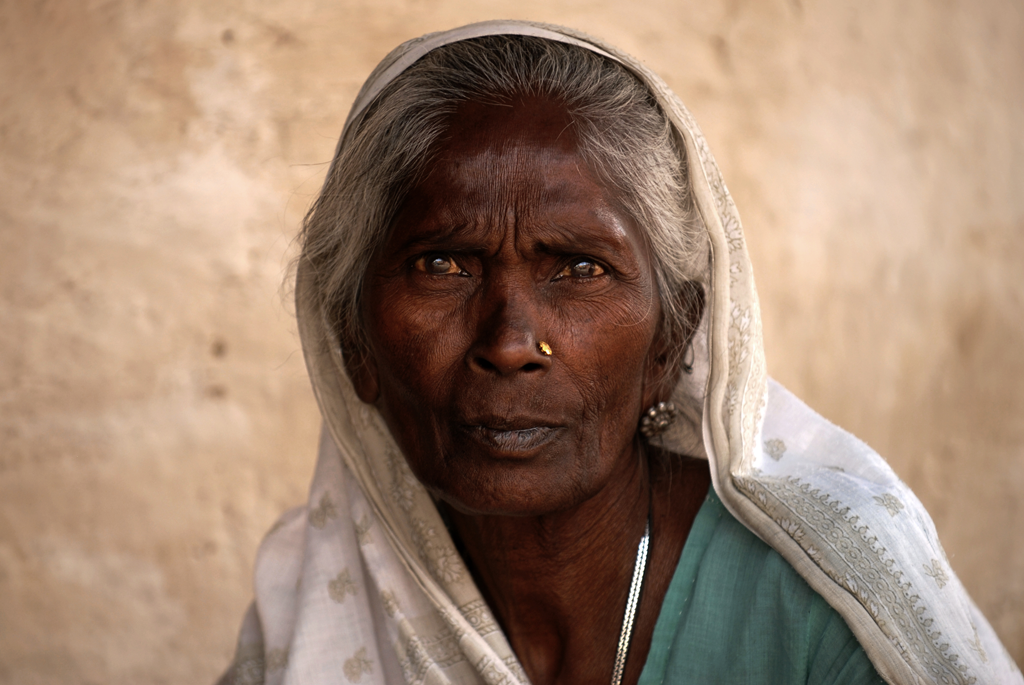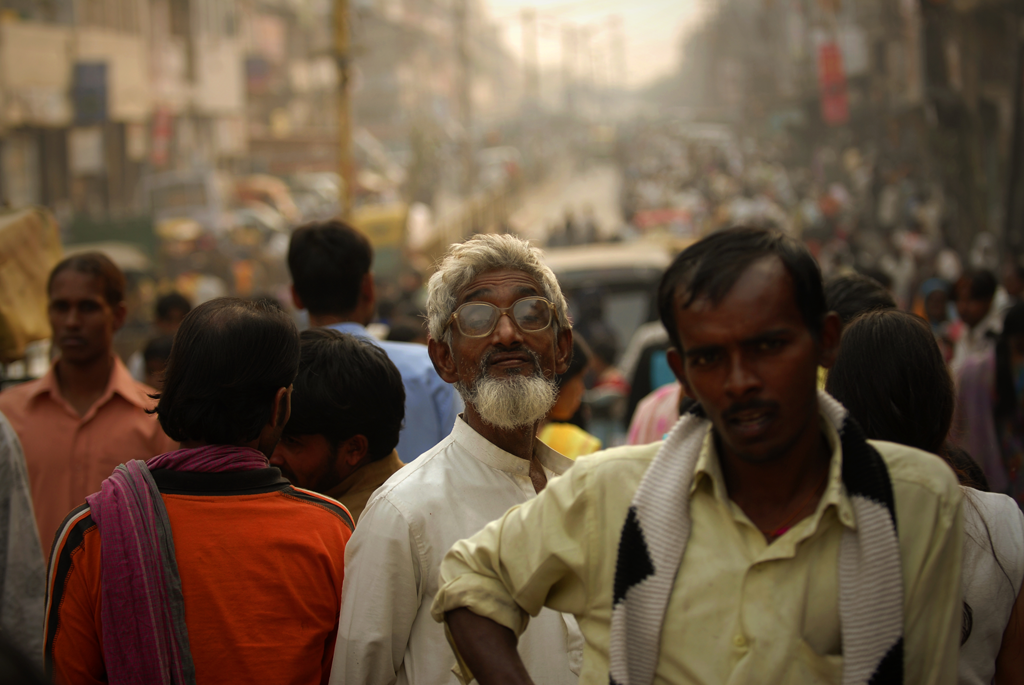 |
Immersed into India
As the photographer Kristian Bertel learned, the cultural country of India is one of the oldest in the world. The millennial old history is reflected in a wealth of imposing buildings. The multinational state is dotted with monuments, grandiose temples and mosques, magnificent Maharaja palaces and lonely cave monasteries. In the melting-pot of religions, Hinduism, Buddhism and Jainism have retained their significance. As one of the largest industrializations in the world, India has opened its gates to the new millennium. The diversified landscape, the varied vegetation and the multi-faceted traditions of everyday life leave a colorful picture of unforgettable travel impressions.
 |
Colorful province of India
The province of Rajasthan is undoubtedly one of the most beautiful regions of India. Precious Maharaja palaces, charming desert landscapes and colorful villages fascinate as well as the highlights of Islamic Mogul architecture, massive fortresses and artful Jain temples. You will experience men with colorful turbans and women whose robes are considered the most colorful in all of India. The empire of the Rajputs presents itself as a dream of 'Thousand and One Nights' and will make your Rajasthan trip an unforgettable experience.
 |
"India is also the most populous country in the world. Compared to the high population of well over a billion people, it is astonishing that the Indian population inhabits only less than three percent of the earth's surface"
 |
India's population is growing
In the last few years India has risen to more than one billion people and has continued to grow. Even though India has a large number of large cities, the population still includes the majority of the country's population. According to estimates, only forty percents of Indians live in cities. However, with increasing industrialization, the country's population is steadily increasing. The Indian population is anything but homogenous. It is almost miraculous that, despite all these regional differences, the central government succeeded in discovering Indian commonalities and thus successfully creating an Indian ethos and creating a national feeling. Although the majority of the Indian population consists of followers of Hinduism, there are also large minorities of other religions.
Again and again India's government tried to carry out a birth control with different measures. The successes are hitherto modest and far from being satisfactory. Recently, many international experts have argued that birth control in 'Third World' countries is not intended solely and exclusively to reduce the number of births, but to bring prosperity to the population. This, in turn, means that fewer children are born.
 |
Land of contrasts
India is a land of contrasts on the one hand the dazzling, colorful culture that attracts so many tourists, on the other the poverty and the many people who suffer from hunger and disease every day. Despite the strong economic upturn that India has experienced in recent years, large parts of the population still live on the subsistence level and have not developed further with the rest of the country. Poverty drives many people into despair, so they no longer know what to do. The gap between rich and poor is very great in India. Even if progress has been made so far, 44 percent of people still live with less than $1 dollar per day. In India, therefore, adequate nutrition is not possible for all.
 |
Caste system in India
Confused and wrapped in mysterious darkness, there are India's castes. With travelers they are the occasion for new discussions and discussions. How did they ever emerge, how could they persist for such a long period of time? And finally, the many problems they bring with them. The beginnings of the caste system are lost in the fog of history, but it can be assumed that they were created by the 'Brahmins' or priests to underpin their position of power and special position. Later, the system of the Caspian system was expanded with the immigration of the 'Aryans', who felt superior to the native pre-Aryan Indians. Over time, the castes took firm forms, forming four separate classes, each of them with their own laws for behavior. The class of the 'Brahmins', ranks at the top. To them belong the priests and there is judicial power in their hands when it is a question of right or wrong in questions concerning religion and the caste. In the caste below are the 'Kashatriyas' as soldiers and administrative officials, followed by the 'Vaisyas', which include artists and traders. Finally the 'Sudras' come, they are farmers or agricultural workers.
The untouchables is really no caste or class. There was a time when the Hindus of the higher castes were almost horrified when one of these untouchables visited the same temple as they touched, or only crossed their own shadows with one of these outcasts. If this happened, then one had become polluted. Only a strict cleansing action through prescribed rituals brought the necessary cleaning.
Even though the caste system has lost some of its severity and significance in the past few years, it still has a power that can not be underestimated, which is a characteristic of the everyday life of India. This is especially true in the lower population strata. In people with inadequate schooling. It was a great concern for Gandhi to bring the caste of the untouchables out of their isolation. A lot has changed. Despite all these developments, India is still heavily burdened by the burden of the caste system.
"India, it is often said, is not a country, but a continent. Stretching from the frozen summits of the Himalayas to the tropical greenery of Kerala, its expansive borders encompass an incomparable range of landscapes, cultures and people. Walk the streets of any Indian city and you will rub shoulders with representatives of several of the world's great faiths, a multitude of castes and outcastes, fair-skinned, turbanned Punjabis and dark-skinned Tamils. One will also encounter temple rituals that have been performed since the time thousand years ago"
 |
Beliefs in India still remain unchanged
Life can be so overwhelming. It is the fate to belong to a particular caste. Admit it, be submissive, and you will find and enjoy better conditions in your next life. According to this principle, life is still determined today in large parts of Indian society, so that one as the outsider of the thing does not necessarily have to stand down. Even if it is a strange image of our world and often appears unjust, the people here are not necessarily unhappy. It is just a different structure than we are accustomed to.
Even though Indians have accepted modern means of living, improved their lifestyle, their values and beliefs still remain unchanged. A person can change his way of clothing, way of eating and living but the rich values in a person always remains unchanged because they are deeply rooted within their hearts, mind, body and soul which they receive from their culture.
 |
India's metropolitan areas
Sleeping people in public places is a common sight in India and they can find the most hard places on the surface to sleep. As in other countries, India's metropolitan areas have become the center of modern technology and hope for future progress. India is increasingly being judged by the status and living conditions of its megacity, as it is at the heart of the country's commercial and industrial power, the power of its transport, distribution and communication systems. Modern developments in all areas of human life take place alongside the preservation of ancient traditions, the old and the new exist side by side, ruins and memories of past empires are integrated into the social life of today's India.
See also: Kristian Bertel | Photography - Facebook
| This blog post was originally posted on New Travelist that were bringing you a story from every city, town and village on Earth. A collective of people bringing you a story from every city, town and little village on Earth. New Travelist were bring together writers, travelers and photographers from all over the world to give you a detailed, honest and inspirational insight. |
| Tweet |